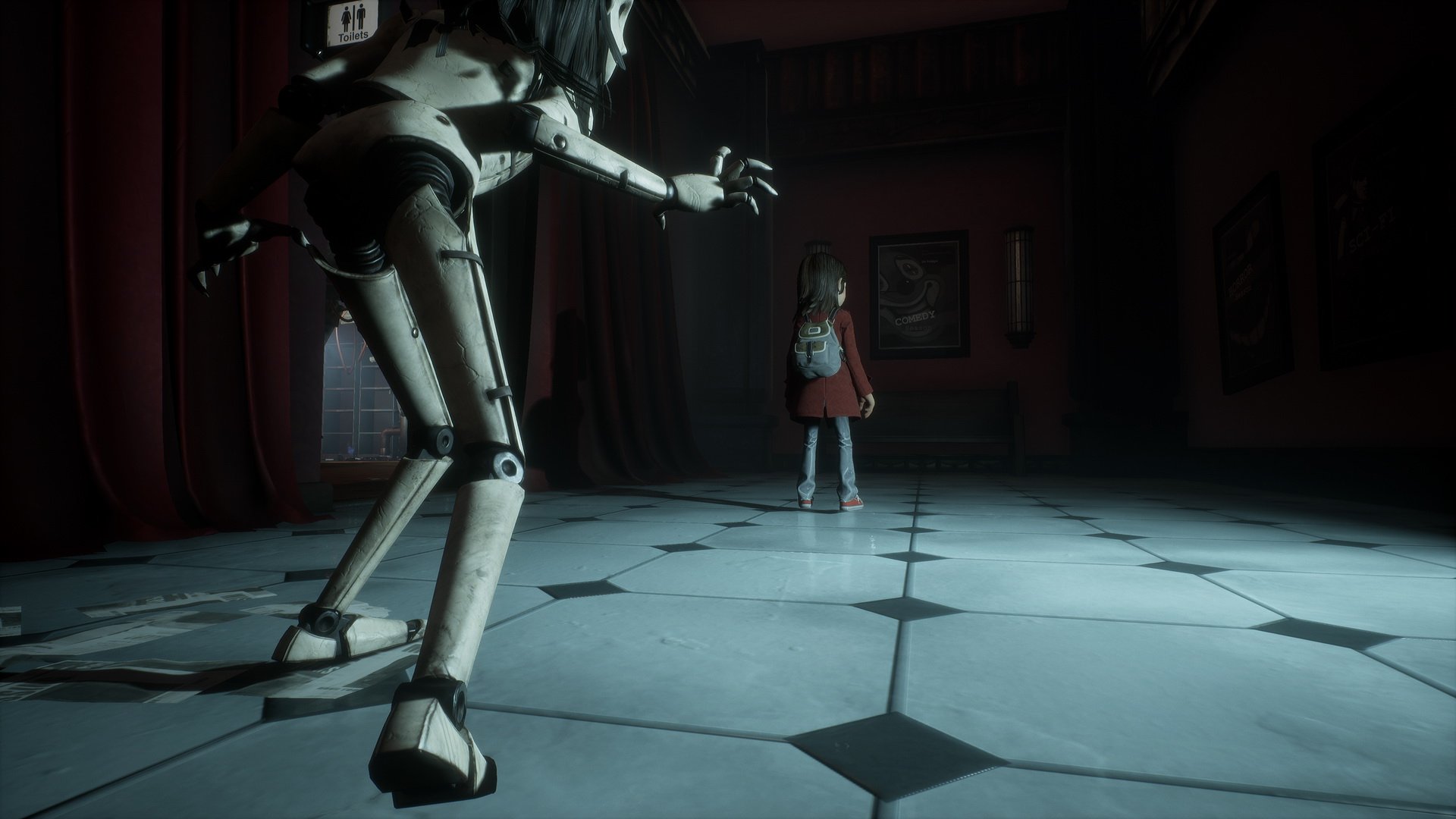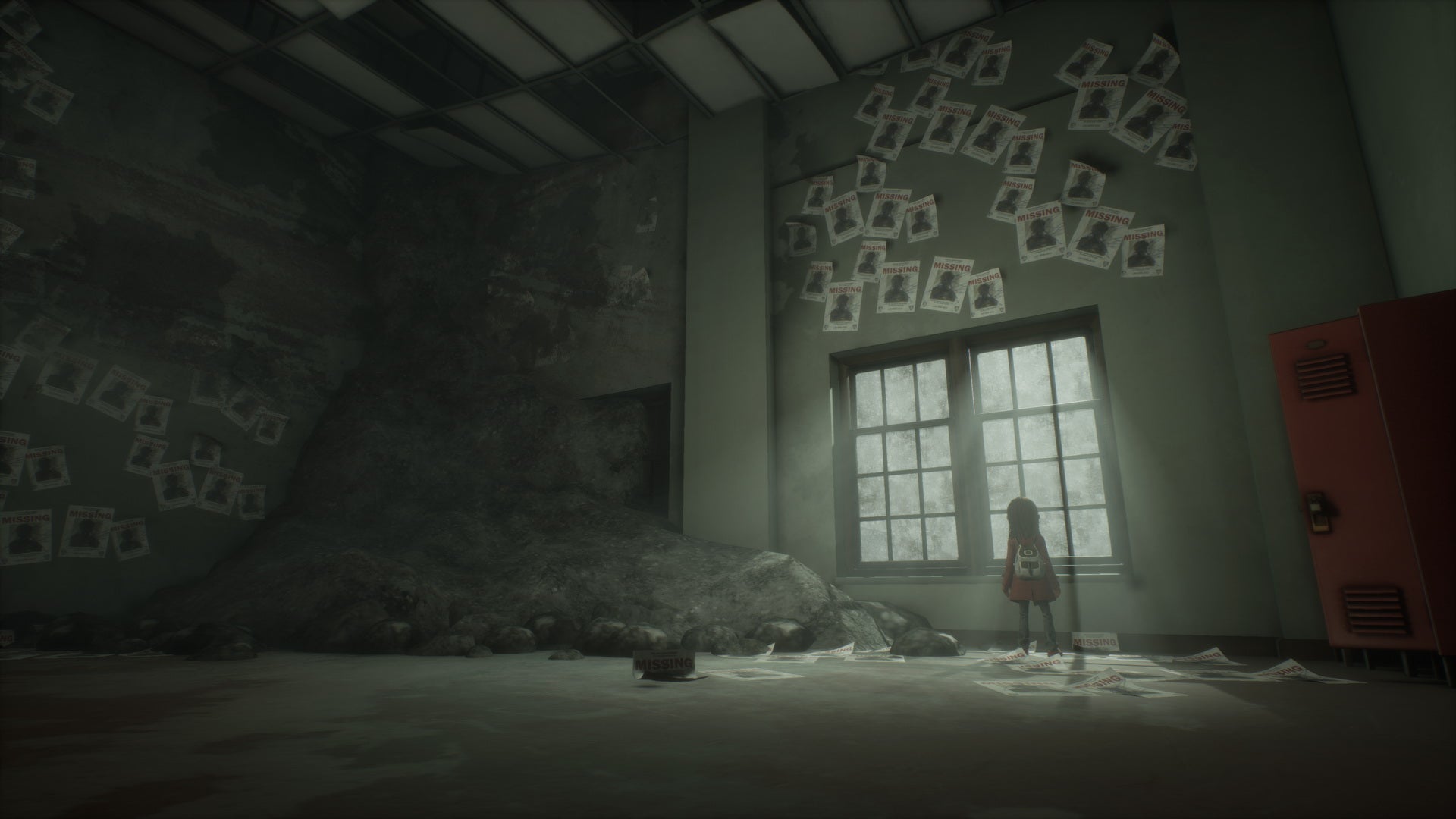From the show floor of PAX West a few weekends ago, I got to go hands-on with Google Stadia for the first time. Google’s big bet that game streaming has arrived impressed me in my 30-minute appointment as I played some Mortal Kombat 11 and the upcoming DOOM Eternal.
While both demos ran as smooth as any player would demand they should, neither is the foremost reason I’ll be eager to get my hands on Stadia when it launches this November.
For me, the killer app is Tequila Works’ GYLT, a Laika-like 3D adventure game launching exclusively for Stadia. I got the chance to speak with the Spanish studio’s CEO, Raúl Rubio Munárriz, about their design process, how they’re utilizing Stadia’s unique features for the eerie GYLT, and what lies at the heart of Tequila Works.
GameSkinny: How long has GYLT been in production? Has it always been envisioned as a Stadia exclusive?
Raul Rubio: Around two years. GYLT was our answer when the Stadia team asked what could we bring to the platform then known as Yeti. There was a previous prototype version before Stadia, but GYLT has been designed with Stadia in mind.
GS: What ways is the GYLT team leveraging Stadia’s features to develop the game?
RR: Stadia changes the way you create. Simulated physics, AI and machine learning. Even on a single-player experience, we can use those amazing tools. For example, style transfer allows us to change the visual style seamlessly in real time. We can enhance the mood and atmosphere from eerie to melancholic to scary by “simply” changing how you see the world.
GS: GYLT was revealed as a horror game. How scary is it meant to be?
RR: It’s not gory horror, more like delicate horror. Less Wes Craven and more Guillermo del Toro. Respectful of the world and its inhabitants. Scary, but always at the service of telling an intimate story about pretty deep and dark themes.
GS: The game is described as letting players “hide from terrible creatures or confront them.” Can you talk about the way players do these things in the game?
RR: Think of a sick hide and seek game. Sally is a little girl facing the physical manifestations of her fears and traumas. She is a fragile character, so using her wits is recommended over frontal confrontation. That means hiding and using stealth to avoid the monsters. Sally has plenty of tools at her disposal, though, so creating distractions or other tactics are available to the player.
GS: The character and world design of GYLT gives the impression of a child’s perspective corrupted by some kind of darkness. What was the process like designing this world? How did you come to this final version we see in the trailers?
RR: Or more like how a child would face and understand that darkness that is twisting her reality. Magical realism was the way we made a world that seems believable but feels something else. Neil Gaiman was a great inspiration, as well as the beautifully crafted stop motion worlds of Laika and Aardman. A combination of physically correct lighting and materials but a very stylized and “hand-drawn” approach to architecture and characters.
GS: What else inspired GYLT, either in fiction or in reality?
RR: GYLT was originally inspired by a personal, real story close to us. It evolved thanks to working with psychologists specialized in the subject of bullying who introduced us to its deep complexity in a respectful way.
The fictional mining town of Bethelwood was heavily inspired by locations from Maine. The state was the main (no pun intended) visual reference, not only because of Stephen King’s tales (laughs) but because of its combination of history, people, and biomes.
Neil Gaiman’s Coraline — and by extension Lewis Carroll’s Alice’s Adventures in Wonderland — helped us shape the twisted and sometimes surreal nature of GYLT. Another unlikely inspiration was RiME itself.
GS: Video games are often very good about getting players to feel heroic or scared at different times, but less successful when it comes to making them feel sad or, as GYLT is described, “melancholic.”
Your previous work, RiME, is the most personally affecting video game I’ve ever played. Behind its own symbolism, GYLT looks like it’ll have a lot of emotional weight, too. What is the process like inside Tequila Works to ensure the player remains emotionally present?
RR: Thank you, kindly. We have been working on narrative structure for a long, long time. We decided many years ago that our stories would be interactive stories, a vehicle to touch the player, driven by their own feelings. As such, the kind of experiences we create are intimate, not epic.
We believe in telling stories worth being told, not excuses to justify fancy graphics or cerebral gameplay. We embrace the interactivity of our medium; we don’t telegraph a narrative and tell you how you should feel, but lay a structure with slots so players can develop their own emotional response.
Just like RiME was about grief, or Deadlight about solitude, or The Invisible Hours about exposure… GYLT is about blame. Sometimes it’s hard to differentiate the victim from the aggressor; sometimes they can be both. In a sense, GYLT is not about judging or indoctrinating, but putting all those elements under the spotlight, and letting the player decide with their actions.
GS: Tequila Works’ history is consistently unpredictable. It’s impressive that one studio is responsible for an eclectic mix of games like Deadlight, The Invisible Hours, RiME, and upcoming projects like Groundhog Day 2 and GYLT. How many teams do you typically have working on different projects and what sizes are these teams?
RR: I guess you can only expect the unexpected from Tequila Works, because we love to play with what audiences take for granted. We are pretty genre-agnostic, just like we are platform-agnostic.
Each creation tries to raise a question or answer one of our own. That would be pretty hard if you only make the same game over and over again I guess. That’s why we always aimed for Tequila Works to be a boutique studio.
Now, we are around 85 people in the studio, currently split in four teams. We just finished Groundhog Day: Like Father Like Son and that team has moved to either GYLT, two new undisclosed projects or The Distillery, our small R&D team.
We are very flexible, and we have never put all the staff on a single project because that would be AAA territory, and we have been there, done that. Our team sizes change a lot, the smallest being one, strike teams are typically three, each Distillery “cask” is five, Groundhog Day: Like Father Like Son was 18 at its peak, GYLT is around 35.
It’s all about the project scope. We try not to oversize because big teams require not only more “bureaucracy” but it’s harder for the creativity and spontaneity we’re prideful of to flow in a less agile working environment.
GS: With that in mind, how does Tequila Works determine where they’re going next with their projects and why is GYLT the right game to make now for your studio?
RR: Tequila Shots and The Distillery, of course! They operate on a Game Jam basis and are responsible for the boldest, craziest stuff playable. Also proper R&D like new tech or tools, but mostly new future concepts with gusto.
Concepts come from the Tequila Shots (regular internal Game Jams) where people propose personal ideas. Everyone is welcome, no matter their background (financial and accounting have dreams, too!) and all ideas are voted on by everyone. The only requisite is answering the questions: “Where is the beautiful?” “Where is the crazy?” That’s how GYLT entered our lives; it was the project the team believed in.
I’m involved in all our projects, but we truly believe in career development inside the studio and that’s why David Canela is leading the GYLT project, with me as editor, creative supervisor, or executive producer, choose yourself. I provide constant advice and feedback, but I serve more like a counselor and “keeper of the mojo.”
New generations of talent slowly blending with hardened veterans to keep evolving is key for the studio to grow without diluting our culture. That means you can expect new directors in future projects. I’m full-time on The Distillery and a new project now, being half-time on GYLT and “the other one.” What’s the secret for double-full-time? Sleep deprivation and a grain of lawful chaos, that’s it.
GS: To date, Tequila Works has never made a sequel. Do you ever consider going back to any of your previous worlds, and if so, which ones?
RR: We have written sequel concepts for Deadlight — in all its Metroidvania glory… and RiME — I personally loved this one. We even prototyped the former. Again, maybe not the kind of sequel you expect. If you have finished both games you know what I mean.
I think we feel more confident working on original IPs. Even our sequel proposals are conceived as originals, thus Groundhog Day: Like Father Like Son. Fun fact: one of the early incarnations of The Invisible Hours was a sequel to Deadlight!
GS: What do you hope stays with players after they finish GYLT?
RR: Their integrity. Nobody should completely lose their innocence. Ever.
GYLT launches alongside Google Stadia this November, though no exact date has been revealed for either the game or the platform.
To learn more about GYLT and other projects from the always-busy studio, you can visit Tequila Works’ website. Thanks again to Raul for sharing the view from inside of one gaming’s most unpredictable studios.










Published: Sep 18, 2019 12:36 am